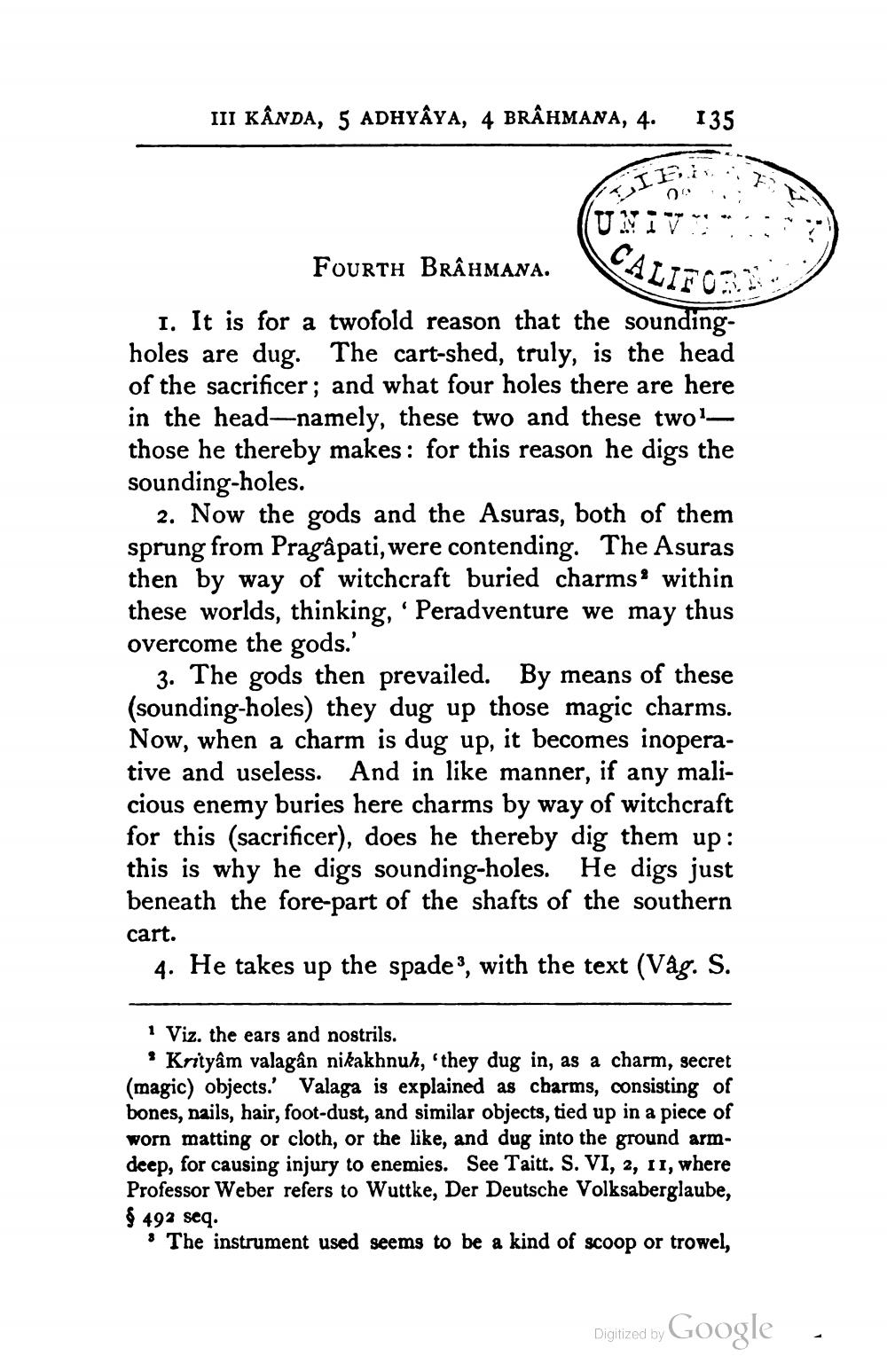________________
III KÂNDA, 5 ADHYAYA, 4 BRÂHMANA, 4.
135
TE
(UMIV".
Fourth BRÂHMANA.
CALIFORNIA
1. It is for a twofold reason that the soundingholes are dug. The cart-shed, truly, is the head of the sacrificer; and what four holes there are here in the head-namely, these two and these twothose he thereby makes: for this reason he digs the sounding-holes.
2. Now the gods and the Asuras, both of them sprung from Pragâpati, were contending. The Asuras then by way of witchcraft buried charms within these worlds, thinking, Peradventure we may thus overcome the gods.
3. The gods then prevailed. By means of these (sounding-holes) they dug up those magic charms. Now, when a charm is dug up, it becomes inoperative and useless. And in like manner, if any malicious enemy buries here charms by way of witchcraft for this (sacrificer), does he thereby dig them up: this is why he digs sounding-holes. He digs just beneath the fore-part of the shafts of the southern cart.
4. He takes up the spade), with the text (Våg. S.
1 Viz. the ears and nostrils.
Krityâm valagân nikakhnuh, 'they dug in, as a charm, secret (magic) objects.' Valaga is explained as charms, consisting of bones, nails, hair, foot-dust, and similar objects, tied up in a piece of worn matting or cloth, or the like, and dug into the ground armdeep, for causing injury to enemies. See Taitt. S. VI, 2, 11, where Professor Weber refers to Wuttke, Der Deutsche Volksaberglaube, $ 492 seq.
* The instrument used seems to be a kind of scoop or trowel,
Digitized by Google




